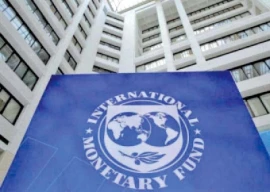
Debt is not really as bad a thing as it is made out to be. Pakistan has run a budget deficit since its inception, and loans were taken as early as the 1950s and 1960s. Loans taken for the right purpose, used properly and then paid back on time are, in a way, critical for the development of an economy.
This was certainly the case in the 1950s as well as the 1960s, when the majority of loans that were acquired were used to promote industrial growth.
While many may have issues with Ayub Khan’s politics, very few question his economics. The country saw arguably some of its best growth years under the military dictator. In fact, Pakistan has seen some of its best growth in the times of two military dictators – Musharraf and Ayub. But I digress.
Coming back to the topic, as I said, a loan is not a bad thing. Most entrepreneurs would not be the success stories that they are if they did not have access to start-up capital. They were successful because of three things: one, they had the right economic model or idea, for which the loan was acquired; two, they used the loan for the purpose it was intended for; and three, they made it a priority to pay off the loan. In fact, it would be impossible for a developing economy like Pakistan to move forward if it did not have access to project financing.

But a loan acquired just to pay off previous loans makes much less financial sense and is also very risky. Again, this can and has worked if the economy is growing at a healthy rate – which is not the case with Pakistan. And it can work if the loans are being used equitably and the return on the investment is viable; which, again, is not the case with Pakistan.
It is therefore important to gauge an economy’s ability to pay back debt. For example, Japan usually has a debt-to-GDP ratio that has hovered close to the 100% mark, but no one has ever questioned Japan’s ability to pay back these loans. It is all about the health of the economy. The risk increases if the economy’s ability to pay back loans is also in doubt. If that is the case, then the economy has, or is, at risk of slipping into a debt trap.
In Pakistan’s case, the rationale of seeking more and more debt just to pay off previous debt is a recipe for disaster. There is an urgent need to increase the tax base, to stop giving tax waivers, to do away with subsidies and to limit non-development expenditures. This sounds like a broken record, but it is the only way.
The answer to this lies in stimulating real growth in the economy while ensuring stability, security and investor-friendly policies. There should be strict checks and balances in place before the approval of any further debts. In fact, while it may seem like a financial impossibility, Pakistan is courting disaster unless it plans a strategy based on acquiring no more debt from this point on.
But the real answer lies in austerity – in cost-cutting. Not by the average Pakistani, but by the government. The size of the government and the bureaucracy has to be reduced; the cost of that excessive manpower has to be slashed.
After the 18th Amendment, provinces can raise their own debt. This has the downside of public debt accumulation at the sub-national level. It is most likely that the provinces will follow the federal government route of resorting to bank borrowing... and that is a scary thought. It has to be discouraged. And I think the State Bank has tried and failed. Nonetheless, given the current scenario, it is still worth a shot.
Published in The Express Tribune, February 11th, 2013.
Like Business on Facebook to stay informed and join in the conversation.
COMMENTS (2)
Comments are moderated and generally will be posted if they are on-topic and not abusive.
For more information, please see our Comments FAQ

















And this is a paid article
Japan's debt to GDP ratio is over 200%. The author should have done some basic fact checking before writing this article.